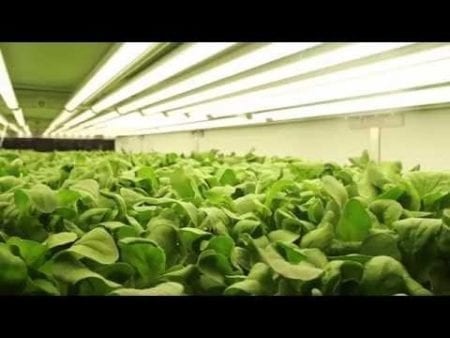 The LED lamp for plants favorably differs from other sources of phyto-illumination by two main indicators – low energy consumption and the full spectrum of light waves required by the plant.
The LED lamp for plants favorably differs from other sources of phyto-illumination by two main indicators – low energy consumption and the full spectrum of light waves required by the plant.
Daylight contains in its spectrum all the colors of the rainbow, but only some of the wavelengths are used by plants. The blue and red spectrum is absorbed by plants most, and, for example, plants ignore the green light almost completely!
Most plants need light to live. Their leaves contain a special pigment, chlorophyll, through which the process of photosynthesis takes place – the conversion of the energy of light into chemical compounds necessary for the plant to grow and bear fruit.
The process of photosynthesis occurs due to two chlorophylls: A and B. Each absorbs a certain wavelength of visible daylight. Chlorophyll A absorbs the red spectrum of light, from a long wavelength of 630-700 nm – this spectrum is necessary for the plant to bloom, set fruit and ripen it. Chlorophyll B absorbs the blue spectrum, namely the wavelength of 430-460 nm – this plant uses the spectrum at the stage of vegetative development and growth. Chlorophyll B is also associated with the development of the plant root system.
The advantages of using LED lamps for plants
Due to their spectral characteristics, LED lamps, or ice lamps for plants, are ideal for vegetative growth, flowering and abundant fruiting of most flowers, vegetables and fruits.
In addition to the properties of phytoactive LED light sources that are certainly useful for plants, it should be noted that energy consumption is extremely low.
Recall that photosynthetic efficiency is not an indicator of the actual brightness of the light source, but its effectiveness for the plant itself. Of course, the gas-discharge sources of phyto-lighting are much brighter than the LED lamps, but the plant uses only 30% of this colossal radiation. And on the contrary, LED lamps for plants can boast of efficiency, which for some manufacturers reaches 96%!
Do not forget about the problem of high temperatures. And the most powerful of them can pose a real danger to both plants and gardeners. Such lamps are best used in combination with special cool tube reflectors, which very effectively solve the problems of heat removal from the greenhouse or bulkhead.
All these shortcomings devoid LED lamp. It can be placed directly above the plants, without threatening the plant. Agree, it can be very useful in a small area, or when it is not possible to hold a large grow box, greenhouse or greenhouse.
LED lamps for plants are equipped with power supplies that are different from other ballasts with reliable design and ease of use – usually they are 12V power supplies of various capacities.
A lamp with diodes is the most effective way of providing the required color spectrum of photo-cultivated plants. Most often it is used for lighting greenhouses, in greenhouses, aquariums, indoor gardens and for indoor plants. LED-lights have become the best alternative to natural lighting, as they are economical and have a long service life.
Picture Credit: youtube



